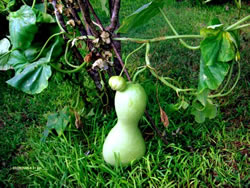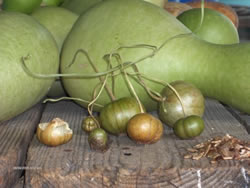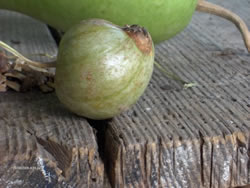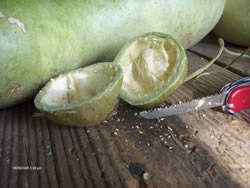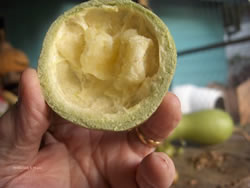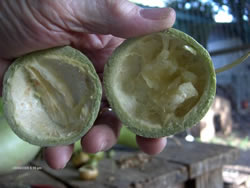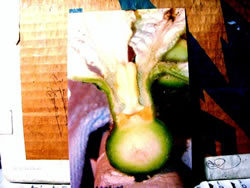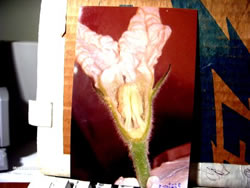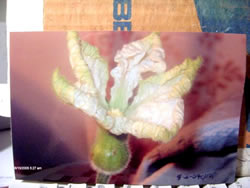Search
For The Answer
Click here to access our database of
Plant Answers
Search
For The Picture
Click here to access the Google database of plants
and insects
Information
Index
Alphabetical Listing of Topics, Recommendations
and Plants
Milberger's Nursery and Landscaping
3920 North Loop 1604 E.
San Antonio, TX 78247
210.497.3760
nursery@milbergersa.com
Open 9 to 6 Mon. through Sat.
and 10 to 5 on Sun.

Three exits east of 281, inside of 1604
Next to the Diamond Shamrock station
Please click map for more detailed map and driving directions.
QUESTION: Male bloom produces a fruit --Can it produce a fruit? ANSWER: I have seen Papaya male blooms produce a fruit and C.D. Perego at:http://www.webspawner.com/users/cdperego/index.html sends these images with the write-up which reads: After growing large martin house gourds for 12 years from the same seed line, some of my gourds have borne small seedless gourds at a few of the pollinator flowers. They Form at the bottom of the Calyx as if the flower was a seed producer instead of a pollinator that has no style and stigma. Dissection reveals that only anthers are present in the type flowers that make a fruit. These pollinator flowers produced gourds are very small , but very hard shelled . ranging in size from about 1 or 2 inches diameter to about 3 or 4 inches diameter, they have for the first time been produced by my bottle gourds this year. They are hollow when dry, but contain a pulp while growing . I don't believe its unheard of ; just somewhat rare. The pollinator
flowers that will produce the curious fruit develop a bulbous
portion just above the top of the stem at the bottom of the calyx
If undisturbed this bulb grows into a small gourd after the flower
withers . The bottom part of the calyx doesn't wither. Inside
the bulb there has already formed a globular container(the young
tender shell) that is complete extending under the nectar area
and is full of pulp that later becomes placental -like, but no
sign of ovules can be seen . I have found that the soft, tender
shell is formed before the flower has opened and becomes hard
and durable with a scar where the flower had been . |





